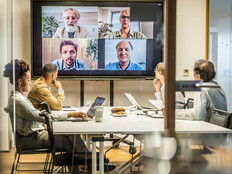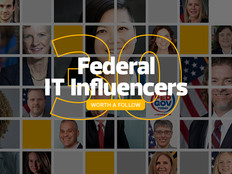Four Email-Productivity Tips for Federal Employees
Email isn’t always the productivity booster it’s touted to be. In fact, inboxes are probably taking up more time than they should, resulting in less actual work being done in the office.
Here are a few tips to help you keep your email — and your sanity — under control:
This Is an “A” and “B” Conversation — You Can CC Your Way Out
Fewer emails sent means fewer emails received. Think about it: If you send a co-worker an email and also CC two other co-workers, you have effectively sent three emails. With a quick click, you included more people in the conversation, so you shouldn’t be surprised when they want to chime in with an email response. Your co-workers might even start CC’ing other co-workers. Next thing you know, you have a long thread of emails from more people than you expected — or wanted.
Copying people on an email is necessary sometimes, but keeping it to a minimum is one of the easiest ways to cut down on email. As a general rule, CC only the people who must be included in a conversation. The people you leave out will probably appreciate having a few minutes to spend on something other than replying to a nonessential message, and you will have fewer responses to sort through later.
As with most other email-related problems, the issue is not the technology, it’s the culture. If you are a manager, give your employees some guidelines and then ask them not to copy you on everything. It will empower them to make decisions on their own and may trigger a change in their email philosophy.
Put Your Mobile Device to Good Use
Keeping your inbox viewable all day is probably not the best way to manage email. The productivity website Lifehacker suggests that you deal with email away from your desk. That doesn’t mean spending your personal time on work email; it means stepping away from your desk now and then — a healthy recommendation for a number of reasons — and checking email on your mobile device. Maybe it means sitting on a bench outside your office or simply standing up when it’s time to tackle your inbox. It won’t work for every email that needs a response, but it’s an easy way to break up your day and keep your thumbs strong.
Stop Chasing Inbox Zero
An empty inbox sounds beautiful, doesn’t it? And if you can achieve it, your inbox will look lovely — for about 3 minutes. Then an email arrives, and the cycle starts anew.
The original concept of inbox zero is all about using your email inbox as a to-do list. This works well in theory, but an effort to keep the unread count low is probably unrealistic.
Each email represents a certain task. For some emails, that simply means reading it. For others, it means putting some thought into a response. And for others, it means downloading a 40-page document, reading it, making notes and then sending it back. One task takes thirty seconds; another task could take several hours.
Keeping your email organized can help your productivity, but don’t let the allure of an empty inbox distract you from the real work you need to do.
Take an Email Vacation
Email vacations don’t require you to use your PTO, and they can be extremely beneficial for your health and your agency’s mission:
Researchers from the University of California, Irvine, and the U.S. Army found that a group of workers who were cut off from office email use for five days experienced more natural, variable heart rates and switched between computer windows only half as much.
The study found that “vacationers” switched screens about 18 times per hour, compared with 37 times for workers who were using email. Multitasking is notoriously unproductive, and email is one of the biggest contributors. An email vacation could be just what your brain and body need to get caught up on work.
With great power comes great responsibility. Email is indeed a formidable tool when used properly, so think before you hit Send.







